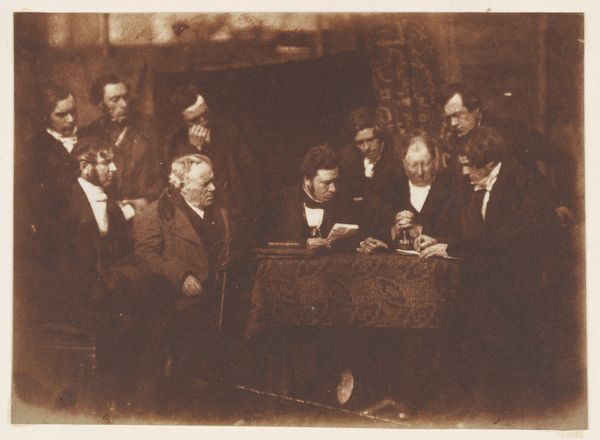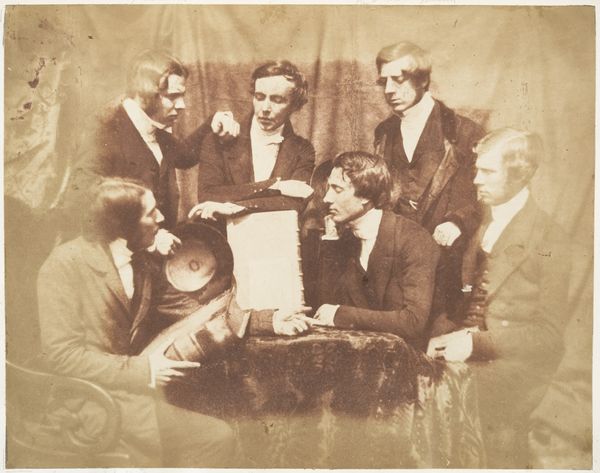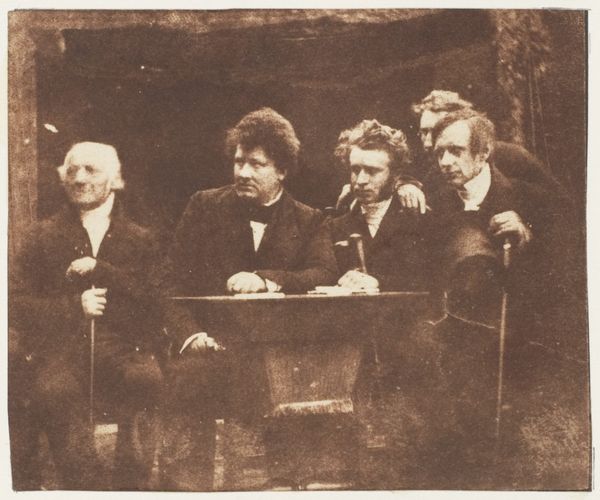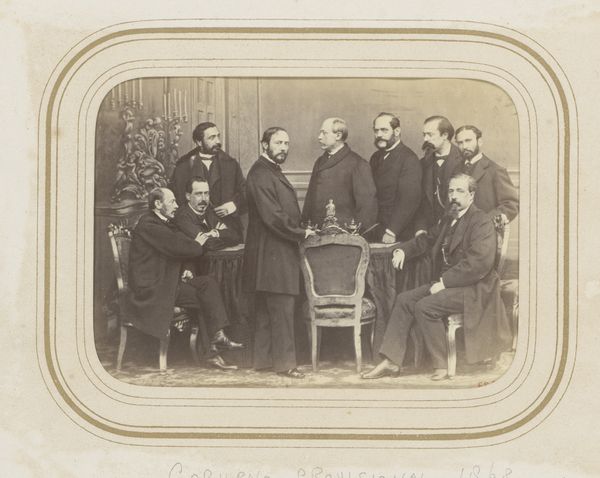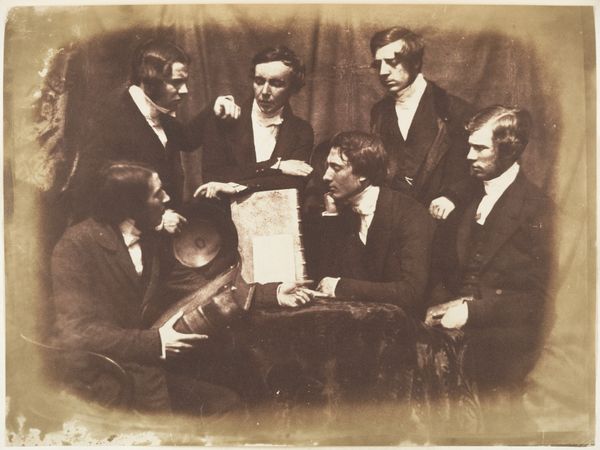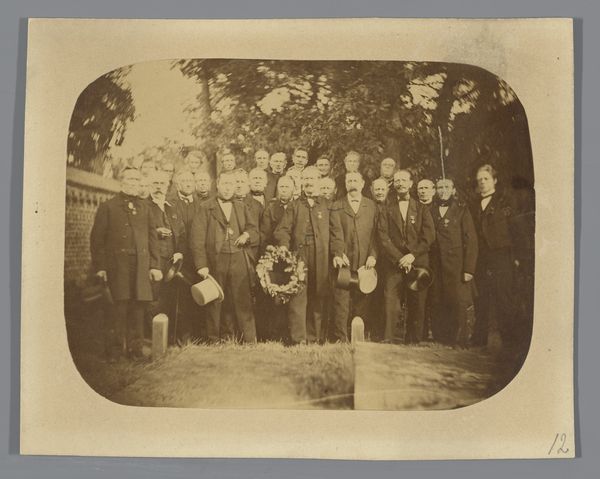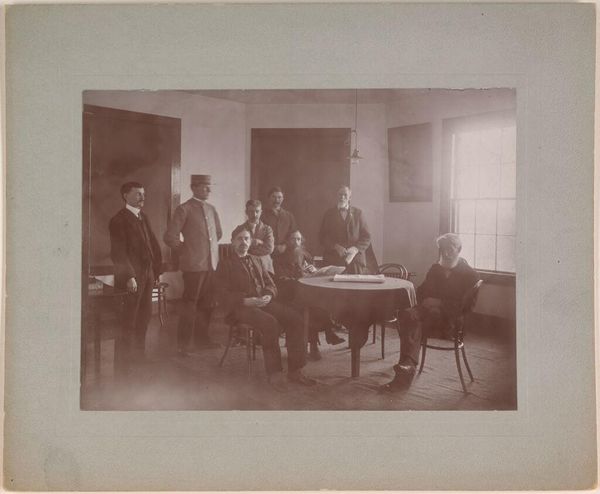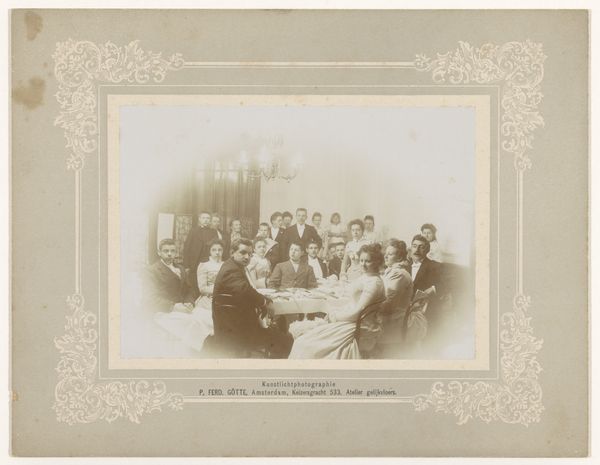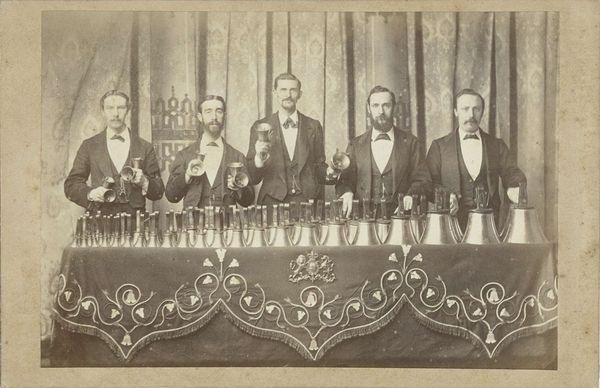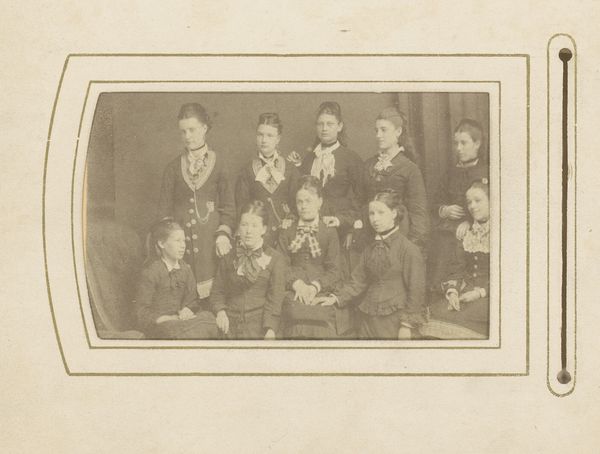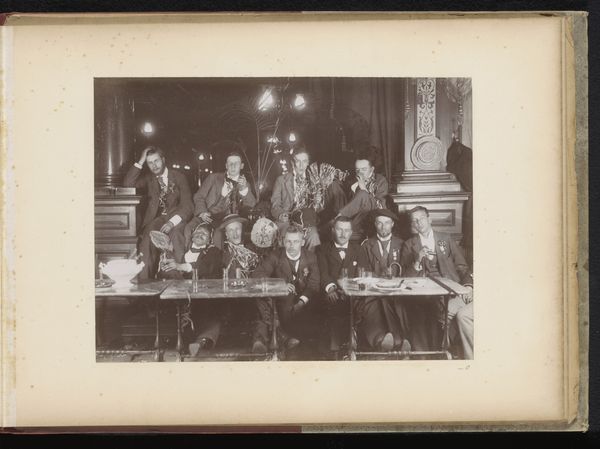
photography, gelatin-silver-print
#
portrait
#
photography
#
group-portraits
#
romanticism
#
gelatin-silver-print
#
men
Copyright: Public Domain
Editor: This is "Presbytery of Dundee," a gelatin silver print created between 1843 and 1847 by Hill and Adamson. It strikes me as very formal and imposing, even with the slightly blurred details. What stands out to you? Curator: The composition immediately commands attention. Notice the carefully arranged figures: the stability of the triangular grouping, the varying heights and postures creating a dynamic yet controlled rhythm across the surface. Observe how the light, diffused and soft, models the forms, emphasizing texture and depth. Editor: It almost looks like the composition of a painting; what is that table doing to the overall geometry of the artwork? Curator: Precisely. Consider the horizontal plane of the table: It anchors the composition, providing a stable base against which the verticality of the figures is measured. Furthermore, its patterned surface introduces texture that both contrasts and harmonizes with the dark, smooth suits of the subjects. Are you perceiving anything disruptive, any contrasts? Editor: The softness, particularly around the edges, definitely sets it apart. The poses also seem very rigid, which is understandable, considering the technology and long exposure of photography at the time. Does this influence the work in other ways? Curator: Indubitably. This rigidity influences our perception. It creates a stillness, and that stillness invites a deeper engagement with the forms themselves. The composition and arrangement are designed to communicate solidity and authority. This solidity is as much a quality of the artistic composition as it is a product of its subject. Editor: I see how looking closely at those elements gives us so much to consider beyond the initial impression. Curator: Indeed, formal analysis allows us a profound dialogue with the work. We see not only the subject matter, but how it communicates and means.
Comments
No comments
Be the first to comment and join the conversation on the ultimate creative platform.
